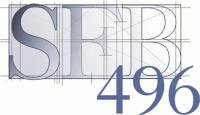|
The Collaborative Research Centre 496 deals with the fundamental effect the symbolic had in pre-modern Europe on the formation of social and political structures. The work focuses on how social value systems manifested themselves, were visualised, and rendered permanent; but also were attacked and changed by ‚symbolic' communication - as opposed to ‚instrumental', ‚discursive', or ‚abstract-conceptual' forms. Central here are symbolizations of a verbal and visual nature, as well as representational ones, including metaphors, artefacts, and gestures; and complex symbolic sequences of acts like rituals and ceremonies, or works in the fields of literature, music, and the visual arts.
Attention is focused on pre-modern Europe from the Early Middle Ages to the French Revolution, thus a period in which the forms of communication changed considerably. In spite of the differences in subject matter, methodology, and disciplinary background, all participants are convinced that the various forms of symbolic communication provide a key to understanding pre-modern societies, their specific rationality, and their change over time. The starting point was the by now frequently validated thesis that these symbolic forms carried a high degree of reflexivity and played a major role in the functioning of these societies, mainly through their impact on social bonds and obligations.
The Collaborative Research Centre shares the premise of these cultural studies that symbolizations structure the empirical perception of the social world, motivate and orientate actions, stabilize normative expectations, and bring to mind collective values. The real validity and force of values and norms in a society require for their acceptance stipulated forms and acts; that is why their symbolic realization plays such a fundamental role. Every society ascertains continuously the validity of values and the stability of norms in the past, present, and future by symbolic acts, which render the values and norms tangible in a momentarily condensed and sensually perceivable form. The power of the symbolic, with which existing orders always confront the individual, creates or enhances affective bonds and value convictions which transcend every rational-discursive substantiation. The fundamental differences on which a social order is based (e.g. man/woman, noble/common, sovereign/subject etc.) are usually not reflected as such but appear as given and unquestionable. This, though, implies by no means that the symbolic forms in which differences manifest themselves evade a reflected and interested use. Indeed, fighting for social power can be described as fighting for ‚symbolic power', i.e. for the power to denominate and make something visible symbolically. The point in question is, therefore, which actors in what conditions, for what reasons and to what effect, focus on symbolic acts, question them, attack them, or negotiate them anew (all either by symbolic or discursive means).
In the meantime, it has become evident that modern society also needs symbolizations to function. Yet, contrary to premodern times, this contradicts modern society's conception of itself, based on the idea of a constant progress in abstract rationality and discursive reflexivity, of a development ‚from myth to logos'. This self-image of modern times and modern society, however, has in recent years met with growing skepticism, and the collaborative research centre's approach is shaped by this more reserved view of modernity. It intends to question a set of notions about the change in the relation between discursive and symbolic communication from the Middle Ages to the beginnings of Modern Times; without, however, denying that a fundamental change has taken place, nor that this change can best be understood through the categorical classifying of its process. The guiding question is in what way forms and modes of symbolic communication changed from the Early Middle Ages to the beginning of Modern Times, and how contemporaries reflected upon it. Analyzing the specific force and potential of symbolic communication in conveying moral concepts and behavioural norms in pre-modern societies furthers our understanding of these societies and sharpens our awareness of the role symbolic communication has in the present age.
Sixteen individual projects come together in the research centre, spanning the disciplines of history (from the Middle Ages to 19th century), book studies, art history, medieval Latin philology, history of law, musicology, theology, folklore/European ethnology, and Westphalian and comparative regional history history. In spite of the fundamental interest in a comprehensive perspective, a chronological division of the collaborative research centre into three project areas seems obvious: A: Middle Ages; B: The Period of Transition (15th/ 16th centuries); C: Early Modern Period.
|















